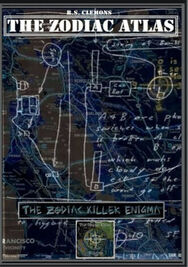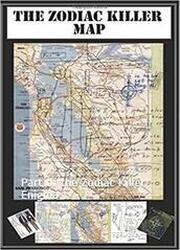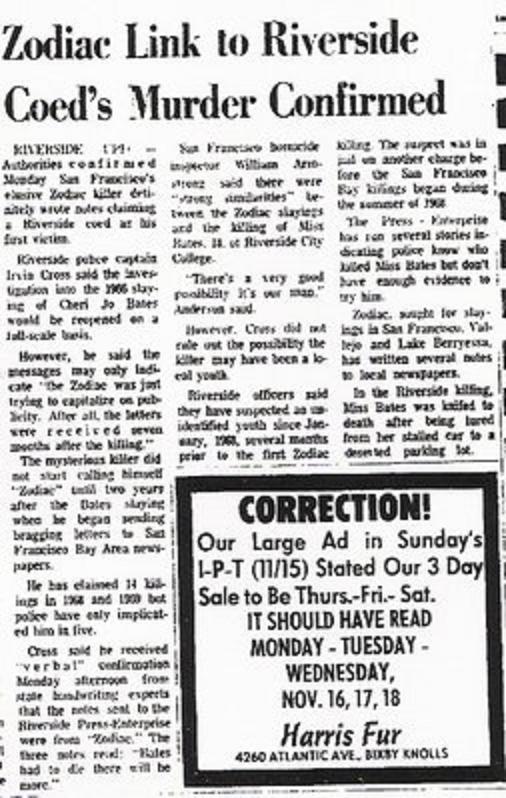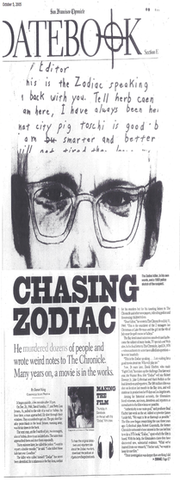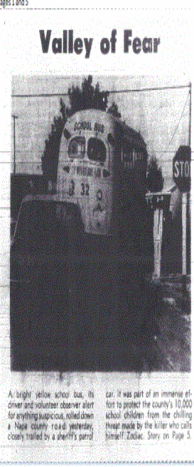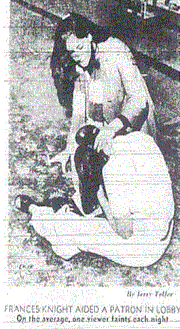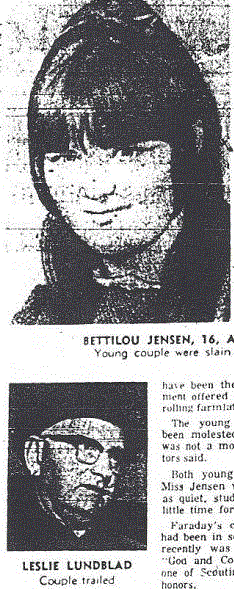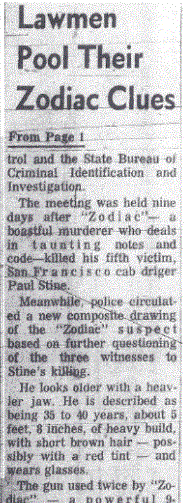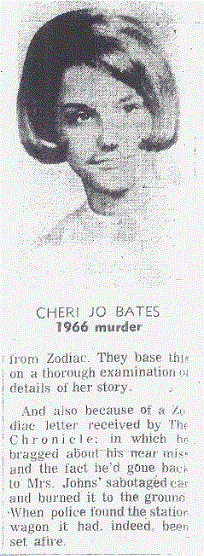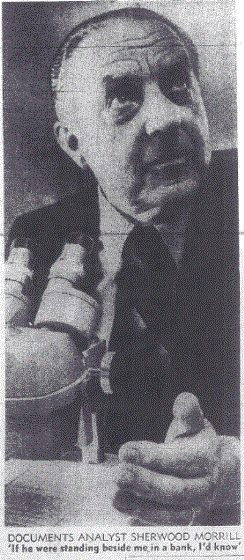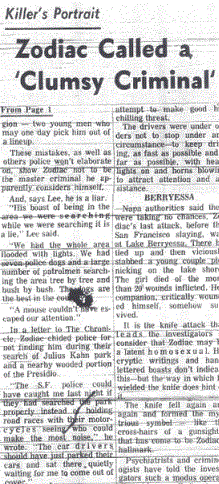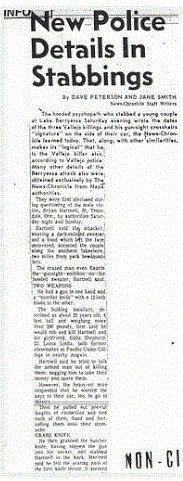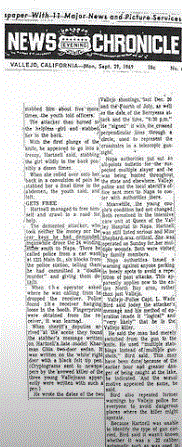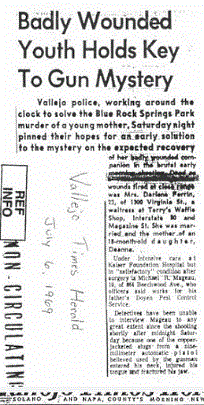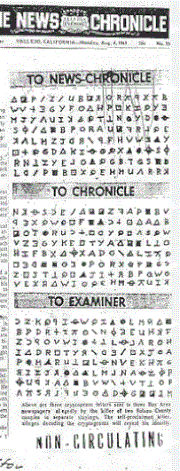The casing at 8 feet and 2 inches is positioned such, that a perpetrator firing a shot into the right rear window at a distance of 2 to 3 feet, would be able to create the downward trajectory depicted in the crime scene photographs, in which the bullet was capable of striking the lower edge of the Rambler rear window and embed itself in the left rear wheel well. This angle of shot could only be achieved by a perpetrator standing relatively close to the window. The ejected casing landing to his rear, about 8 feet 2 inches from the Rambler. This just leaves a cluster of six casings shown in the white elipse above. When the killer executed David Faraday to his left ear (who was facing away from the Rambler and standing adjacent to the right rear wheel of the Rambler), the casing likely ejected to the rear of the perpetrator's gun and landed on the front floorboard of the Rambler (either directly, or it deflected off the open door).
|
Below is a clearer and more accurate depiction of the bullet casings discovered on the turnout floor alongside Lake Herman Road on December 20th 1968, based on the police reports stating that the casings were 1.5 inches, 1 feet and 11 inches, 2 feet, 2 feet and 3 inches, 3 feet, 4 feet and 6 inches, 8 feet and 2 inches, 14 feet and 20 feet from the right side of the Rambler. Nine casings on the turnout floor and one discovered on the right front floorboard of the Rambler. You will notice in the police sketches that the bullet casing at 14 feet is shown to the right of the Rambler, level with its front end, meaning that a second vehicle parked alongside the Rambler at approximately 10 or 12 feet away, would have the casing close to its front bumper.
One possible scenario has the killer exiting his driver side door and immediately firing off two shots (with at least one aimed towards the Rambler). One shell casings ejects to his rear, bounces off the roof of his vehicle and comes to rest 3 feet to the right of his passenger door. A car measuring 5 feet in width, 12 feet to the right of the Rambler, means the casing would come to rest on the turnout floor about 20 feet to the right side of the Rambler. The police sketch indicating that this casing was found 20 feet from David Faraday's head is incorrect (check the police report). The bullet from this first shot was likely the one that struck the headliner of the Rambler and embedded in its upholstery on the opposite side, with a straight trajectory. The second shot either missed the Rambler, or was fired into the air as a warning shot. The casing ejecting behind and to the right, bouncing off the hood of the vehicle and coming to rest near its front bumper, 14 feet from the Rambler. Shots 1 & 2 are interchangeable.
The casing at 8 feet and 2 inches is positioned such, that a perpetrator firing a shot into the right rear window at a distance of 2 to 3 feet, would be able to create the downward trajectory depicted in the crime scene photographs, in which the bullet was capable of striking the lower edge of the Rambler rear window and embed itself in the left rear wheel well. This angle of shot could only be achieved by a perpetrator standing relatively close to the window. The ejected casing landing to his rear, about 8 feet 2 inches from the Rambler. This just leaves a cluster of six casings shown in the white elipse above. When the killer executed David Faraday to his left ear (who was facing away from the Rambler and standing adjacent to the right rear wheel of the Rambler), the casing likely ejected to the rear of the perpetrator's gun and landed on the front floorboard of the Rambler (either directly, or it deflected off the open door).
Betty Lou Jensen was, in all probability, standing close to the open door of the Rambler at this point, somewhere close to the cluster of shell casings. After witnessing David Faraday being shot, her only viable escape route was between the vehicles and past the killer to his left hand side, as we look at the above image. The autopsy tells us that the bullets that struck the right side of Betty Lou Jensen's back had a right to left trajectory (the first three shots had an extreme right to left trajectory). Bullets can be deflected by the internal structures of the body, but it's unlikely this would happen five times. This indicates that the killer fired the first three shots when Betty Lou Jensen was literally alongside, marginally in front and to the left of the killer (who was standing approximately in the position he killed David Faraday). The casings ejected to his rear and landed in the cluster of six (shown above). This suggests that the killer fired 6 shots at Betty Lou Jensen, missing once (as she got further away). The gunshot residue by the uppermost hole on the right side of her dress, indicates that the killer began shooting when she was alongside and to the left of the killer. The next two shots almost immediately afterwards (indicated by the extreme trajectory at autopsy). The final two shots that struck Betty Lou Jensen had a slightly flatter trajectory, which indicated she was further away from her killer at this point.
Although shell casings can eject from the same weapon differently, this analysis attempts to explain the two wayward casings at 14 & 20 feet with respect to a second vehicle parked alongside the Rambler, along with the cluster of six casings related to the murder of Betty Lou Jensen. It is also clear from the autopsy reports that Betty Lou Jensen wasn't running directly away from her killer when first shot, but running across her killer, with her right side predominantly facing the killer when the first three shots were fired. This can be explained by Betty Lou Jensen running across the turnout in an approximate manner to the one shown above.
Comments are closed.
|
All
For black and white issue..
Archives
July 2024
|

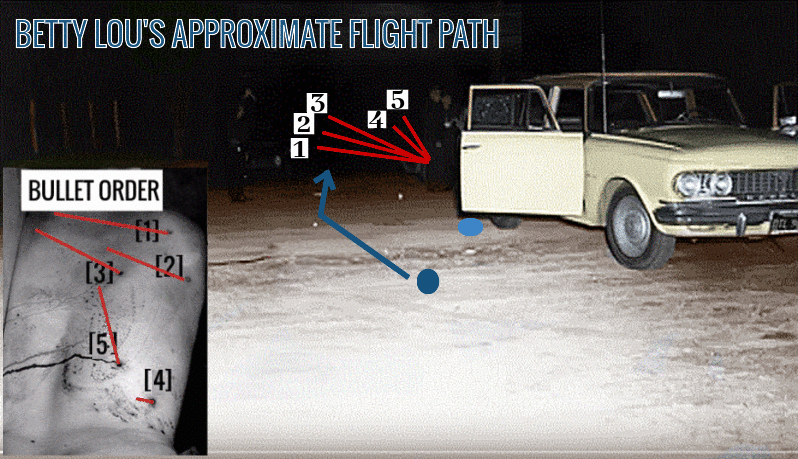




 RSS Feed
RSS Feed



